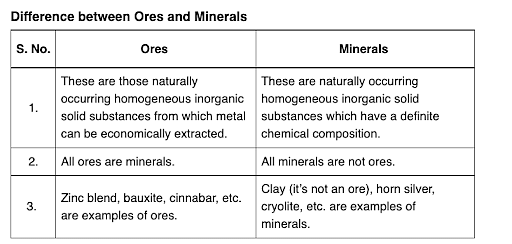The correct option(s) related to the extraction of iron from its ore in the blast furnace operating in the temperature range $900-1500 K$ is(are)
- Limestone is used to remove silicate impurity.
- Pig iron obtained from blast furnace contains about $4 \%$ carbon.
- Coke (C) converts $CO _2$ to $CO$.
- Exhaust gases consist of $NO _2$ and $CO$.
The Correct Option is C
Approach Solution - 1
The correct option is (C): Coke (C) converts \(CO _2\) to \(CO\).
Approach Solution -2
Option (C) states that coke (\( \text{C} \)) converts carbon dioxide (\( \text{CO}_2 \)) to carbon monoxide (\( \text{CO} \)) in the blast furnace. This is indeed correct.
The overall reaction for this process is:
\[ \text{CO}_2 + \text{C} \rightarrow 2\text{CO} \]
This reaction occurs at high temperatures in the blast furnace, typically in the range of 900 K to 1500 K. It is an important step in the extraction of iron from its ore because carbon monoxide is a reducing agent that reacts with iron ore (\( \text{Fe}_2\text{O}_3 \)) to produce iron metal (\( \text{Fe} \)):
\[ \text{Fe}_2\text{O}_3 + 3\text{CO} \rightarrow 2\text{Fe} + 3\text{CO}_2 \]
Thus, option (C) accurately describes one of the key processes involved in the extraction of iron from its ore in the blast furnace.
Top Questions on General Principles and Processes of Isolation of Elements
- Given below are two statements:
Statement I : During Electrolytic refining, the pure metal is made to act as anode and its impure metallic form is used as cathode
Statement II : During the Hall-Heroult electrolysis process, purified $Al _2 O _3$ is mixed with $Na _3 AlF _6$ to lower the melting point of the mixture
In the light of the above statements, choose the most appropriate answer from the options given below:- JEE Main - 2023
- Chemistry
- General Principles and Processes of Isolation of Elements
The reaction that does NOT take place in a blast furnace between 900 K to 1500 K temperature range during extraction of iron is?
- NEET (UG) - 2023
- Chemistry
- General Principles and Processes of Isolation of Elements
Consider the following statements about the oxides of halogens
A. At room temperature, OF2; is thermally stable
B. Order of stability of oxides of halogens is I > Br > Cl
C. I2O5 is used in the estimation of CO
D. ClO2; is used as a bleaching agent
The correct statements are- TS EAMCET - 2023
- Chemistry
- General Principles and Processes of Isolation of Elements
- Which of the following ore is not in oxide form?
- GUJCET - 2023
- Chemistry
- General Principles and Processes of Isolation of Elements
- Which of the following shows an incorrect method of refining?
- JEE Main - 2023
- Chemistry
- General Principles and Processes of Isolation of Elements
Questions Asked in JEE Advanced exam
- A region in the form of an equilateral triangle (in x-y plane) of height L has a uniform magnetic field 𝐵⃗ pointing in the +z-direction. A conducting loop PQR, in the form of an equilateral triangle of the same height 𝐿, is placed in the x-y plane with its vertex P at x = 0 in the orientation shown in the figure. At 𝑡 = 0, the loop starts entering the region of the magnetic field with a uniform velocity 𝑣 along the +x-direction. The plane of the loop and its orientation remain unchanged throughout its motion.

Which of the following graph best depicts the variation of the induced emf (E) in the loop as a function of the distance (𝑥) starting from 𝑥 = 0? - Two beads, each with charge q and mass m, are on a horizontal, frictionless, non-conducting, circular hoop of radius R. One of the beads is glued to the hoop at some point, while the other one performs small oscillations about its equilibrium position along the hoop. The square of the angular frequency of the small oscillations is given by [ \(\epsilon_0 \)is the permittivity of free space.]
- JEE Advanced - 2024
- Moving charges and magnetism
- A group of 9 students, s1, s2,…., s9, is to be divided to form three teams X, Y and Z of sizes 2, 3, and 4, respectively. Suppose that s1 cannot be selected for the team X and s2 cannot be selected for the team Y. Then the number of ways to form such teams, is _______.
- JEE Advanced - 2024
- Combinations
- Let \(\vec{p}=2\hat{i}+\hat{j}+3\hat{k}\) and \(\vec{q}=\hat{i}-\hat{j}+\hat{k}\). If for some real numbers α, β and γ we have
\(15\hat{i}+10\hat{j}+6\hat{k}=α(2\vec{p}+\vec{q})+β(\vec{p}-2\vec{q})+γ(\vec{p}\times\vec{q})\),
then the value of γ is ________.- JEE Advanced - 2024
- Vector Algebra
- Let X be a random variable, and let P(X = x) denote the probability that X takes the value x. Suppose that the points (x, P(X = x)), x = 0,1,2,3,4, lie on a fixed straight line in the xy -plane, and P(X = x) = 0 for all x ∈ R - {0,1,2,3,4}. If the mean of X is \(\frac{5}{2}\) , and the variance of X is α, then the value of 24α is ______.
- JEE Advanced - 2024
- Probability
Concepts Used:
General Principles and Processes of Isolation of Elements
What are Ores and Minerals?
Minerals are the naturally occurring, homogeneous inorganic solid substances. They are having a definite chemical composition and crystalline structure, hardness and color. For example, copper pyrite, calamine, etc.

Impurities in an ore are called gauge. The removal of a gauge from the ore is called concentration ore.
Several steps are involved in the extraction of pure metal from ores. Major steps are as follows –
- Concentration of the ore
- Isolation of the metal from its concentrated ore
- Purification of the metal



